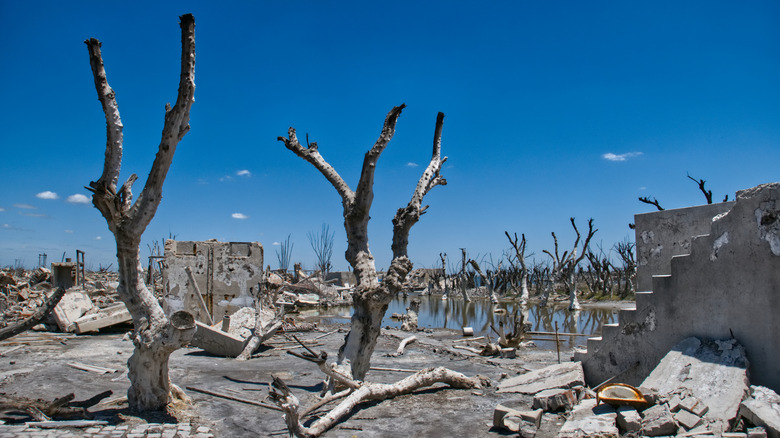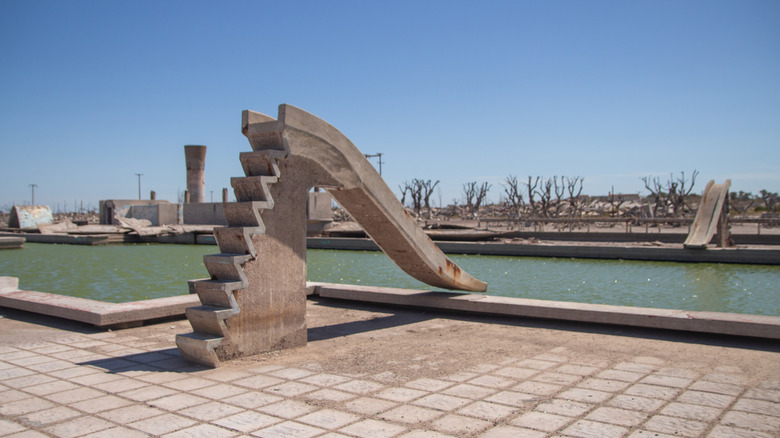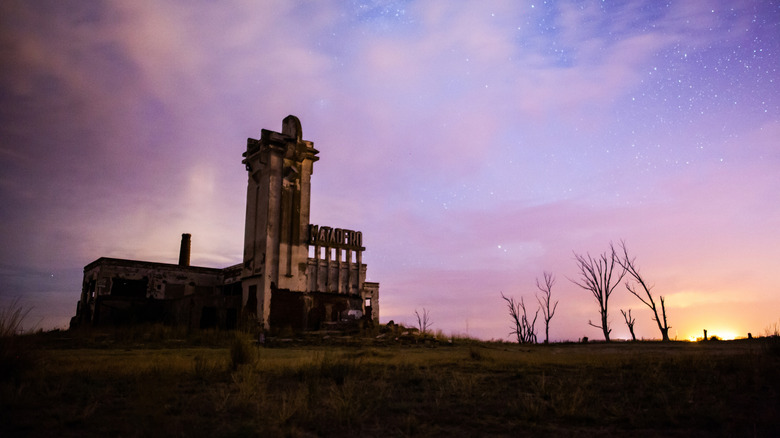What is it exactly that’s so alluring about abandoned towns? Walking through forgotten buildings and deserted streets stirs both nostalgia and voyeurism, letting you peer into the past without a filter or agenda. While Argentina is home to many thriving, beautiful towns — from Tigre, a subtropical paradise only accessible by boat, to the trekking capital of El Chaltén, hidden in Los Glaciares National Park — one of its most fascinating is the empty, tragedy-struck ghost town of Villa Epecuén. It was once a tourist-loved spa town that capitalized on the salty waters of the bordering Lake Epecuén, but in 1985, a heavy storm broke down a dam, and the lake’s waters came flooding into the village, completely submerging it for decades.
When the flood finally dried, what was left of the village was a post-apocalyptic scene: petrified trees, shelled homes, rusted cars, and an ominously remaining slaughterhouse. Villa Epecuén has no inhabitants today, and there’s not much to do in the way of activities, but you can still get to the abandoned town pretty easily by coach. Visitors interested in the eerier side of travel can come explore the town’s ruins, peruse a museum with artifacts left behind, and even take a dip in the purported healing waters of Lake Epecuén.
The devastating flood that gutted Villa Epecuén
Lake Epecuén was known for its highly saline waters before Villa Epecuén was formally established. The local legend tells that the lake was born from the tears of a heartbroken chief, salted by his grief over a lost love. Already attractive because of its salt and mineral content, the first resort was established on the lake’s shores in 1921. It was a boon: The town eventually grew to have 2,000 residents, plus an additional 20,000 summer visitors each year. Back then, no one could have predicted that the lake, which had invigorated this little resort town, would also be its downfall.
Then, in 1985, after years of heavy rain, one particularly intense storm brought the water levels of the lake to an uncontainable level, and the embankment protecting the town from flooding was breached. It eventually submerged the town in over 30 feet of water. Although, luckily, no one died, residents lost their homes and were forced to completely relocate their lives overnight. A resident of the town, Pablo Novak, described the night of the flood in Orato: “A sense of helplessness filled the air as I heard the screams and saw the tears. The 1,500 inhabitants of Epecuén took whatever they could. I watched as they tried to find their way out holding their belongings.”
Novak was later called “Argentina’s loneliest man” by CNN because, about 20 years after the flooding, he moved back into the deserted Villa Epecuén and was the town’s only resident until his death in 2024. The waters receded from the town by 2009, revealing the ruins of its municipal spa, trees bleached by saltwater, and road signs marking derelict hotels.




